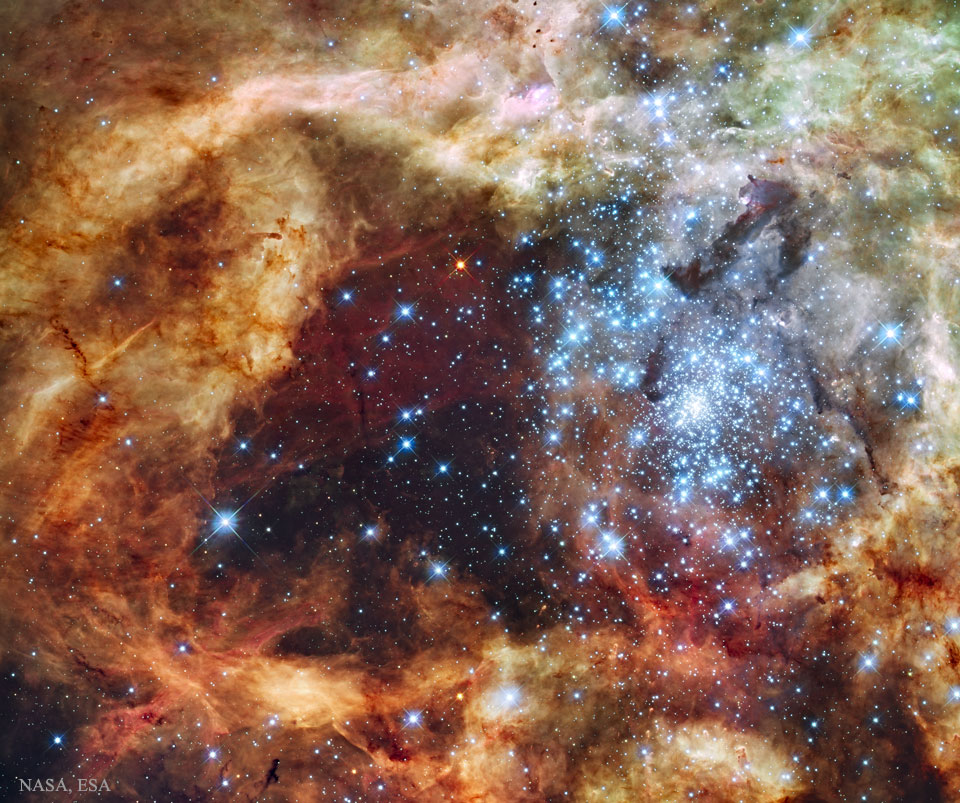De58te wrote: ↑Sun Jan 10, 2021 7:53 am
I think it is kind of interesting that in spite of all the 1,000 or so stars are all blue except for one single red loner, that the nebula they are breaking out of is all colors, red, yellow, orange, green, white and black ... except blue.
The colors have to do with the youthfulness of the stars (circa 1.5 million years) and their high mass and luminosity. Young massive stars emit most of their light in the invisible ultraviolet. In visual light, they emit more blue than green, yellow and red light.
What about the filters used for the image that is today's APOD?
The filters for the image were 336W (U), 438W (B), 555W (V), 656N (H-alpha) and 814W (I).
Four of the filters were wideband filters, which is to say that they react to many wavelengths of a particular part of the electromagnetic spectrum. For example, 336W (U) means that this is a filter that reacts to invisible ultraviolet wavelengths both longer and shorter than 336 nm, but centered on 336 nm. (656N, by contrast, means a narrowband filter which will respond to just one wavelength.)
To understand the colors of the R136 as portrayed by Hubble, you must understand that the massive young stars of R136 emit absolutely huge amounts of invisible ultraviolet light. But in the Hubble picture, ultraviolet light is mapped as visible blue light. That will make the hot ultraviolet stars of R136 look very blue indeed.
In the picture at right, however, R136 is seen in infrared light, which corresponds to cool temperatures. Note how numerous small stars, which were almost invisible in the "blue" image of R136, suddenly pops out. These stars are small and cool and emit most of their light at infrared wavelengths, which is why they will be seen well in infrared images. Also some of the additional stars in the infrared image may be background objects whose infrared light penetrates the dark dust cloud to the "left" of R136.
The one red star in the "blue" picture of R136 looks very bright indeed in the infrared image. That is because all red or orange stars are bright at infrared wavelengths. It is clear that this one bright and orange star is different from the other stars of R136.
Ann
 Star Cluster R136 Breaks Out
Star Cluster R136 Breaks Out







